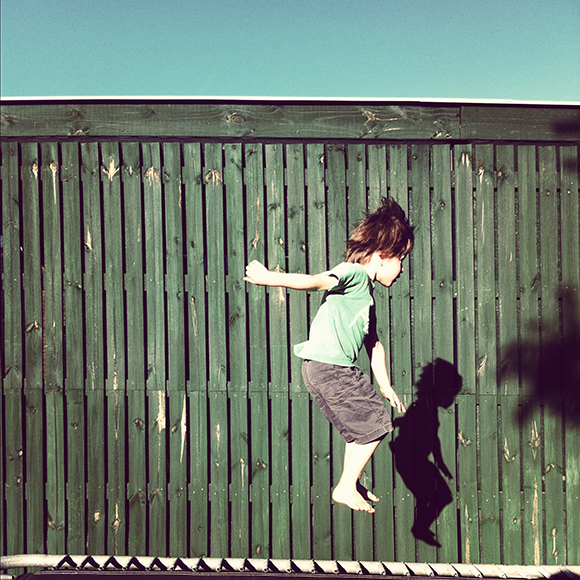I’m standing in an East London pub talking to a bloke from Brisbane. He’s spitting vitriol (and spit) over the rowdy din of the other punters. Couldn’t wait to leave, never going back, Brisbane’s a total dump.
A couple of years later I’m sitting at an industry luncheon listening to a man in a suit passionately extol the manifold virtues of our river city. He’s certain that there’s nothing that Brisbane cannot offer, no possible blemishes. He has diagrams and statistics which he circles with a laser pointer.
I myself have dabbled in both positions. However, I’m increasingly drawn to the idea that neither extreme is particularly productive. Blatant cynicism inspires little in the way of positive change. Blind optimism wears an idiotic grin as it gropes in the darkness.
Norman Mailer observes:
...compassion is of value and enriches our life only when compassion is severe, which is to say when we can perceive everything that is good and bad about a character but are still able to feel that the sum of us as human beings is probably a little more good than awful.
It’s an elegant thought. As I attend to our architectural practice, one small participant in the collective project that is Brisbane, I am conscious of Mailer’s severe compassion and its application in our work. It calls for honesty, rigour and frank appraisal (though most creative professionals are already adept in this). It is, however, the kernel of empathy that makes it sing.
Empathetic work is predicated on acknowledgement by the designer of the intrinsic value of those for whom they make their work. It asserts that people are worthy of the effort and energy required to advocate on their behalf, to minister to their needs, consider their cares and concerns and interrogate their circumstance.
For much of the life of our practice we have worked in the suburbs of Brisbane. If we wanted to make meaningful projects in this setting, we were obliged to weigh the good alongside the awful, but also to see ourselves as part of the suburban landscape; not set apart by virtue of our professional pedigree.
We have also been mindful that our tiny residential projects can contribute to critical city-making and have tried to design them as such. Indeed, when we recently began mapping ten years of our architectural projects on a satellite photo of Brisbane, the proliferation of works was surprising. Collectively, the amount of floor-space we have altered or generated would approach that of a major public building, perhaps affecting a similar number of people on a daily basis.
To look on Brisbane over the last decade has been to see a growing number of people who are ambitious for themselves and their city. Brisbane is an adolescent city still being formed, and it’s readily available to those who wish to form it. While many will still save for a one-way ticket to anywhere else, there is a growing incentive to add a return leg to the journey (hopefully, with a little empathy in tow).
![]()
A couple of years later I’m sitting at an industry luncheon listening to a man in a suit passionately extol the manifold virtues of our river city. He’s certain that there’s nothing that Brisbane cannot offer, no possible blemishes. He has diagrams and statistics which he circles with a laser pointer.
I myself have dabbled in both positions. However, I’m increasingly drawn to the idea that neither extreme is particularly productive. Blatant cynicism inspires little in the way of positive change. Blind optimism wears an idiotic grin as it gropes in the darkness.
Norman Mailer observes:
...compassion is of value and enriches our life only when compassion is severe, which is to say when we can perceive everything that is good and bad about a character but are still able to feel that the sum of us as human beings is probably a little more good than awful.
It’s an elegant thought. As I attend to our architectural practice, one small participant in the collective project that is Brisbane, I am conscious of Mailer’s severe compassion and its application in our work. It calls for honesty, rigour and frank appraisal (though most creative professionals are already adept in this). It is, however, the kernel of empathy that makes it sing.
Empathetic work is predicated on acknowledgement by the designer of the intrinsic value of those for whom they make their work. It asserts that people are worthy of the effort and energy required to advocate on their behalf, to minister to their needs, consider their cares and concerns and interrogate their circumstance.
For much of the life of our practice we have worked in the suburbs of Brisbane. If we wanted to make meaningful projects in this setting, we were obliged to weigh the good alongside the awful, but also to see ourselves as part of the suburban landscape; not set apart by virtue of our professional pedigree.
We have also been mindful that our tiny residential projects can contribute to critical city-making and have tried to design them as such. Indeed, when we recently began mapping ten years of our architectural projects on a satellite photo of Brisbane, the proliferation of works was surprising. Collectively, the amount of floor-space we have altered or generated would approach that of a major public building, perhaps affecting a similar number of people on a daily basis.
To look on Brisbane over the last decade has been to see a growing number of people who are ambitious for themselves and their city. Brisbane is an adolescent city still being formed, and it’s readily available to those who wish to form it. While many will still save for a one-way ticket to anywhere else, there is a growing incentive to add a return leg to the journey (hopefully, with a little empathy in tow).
